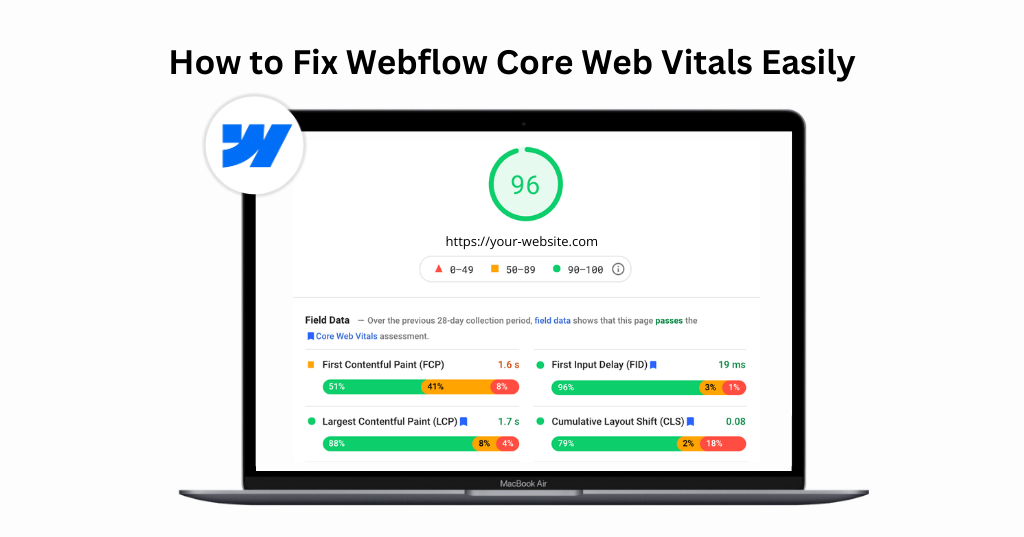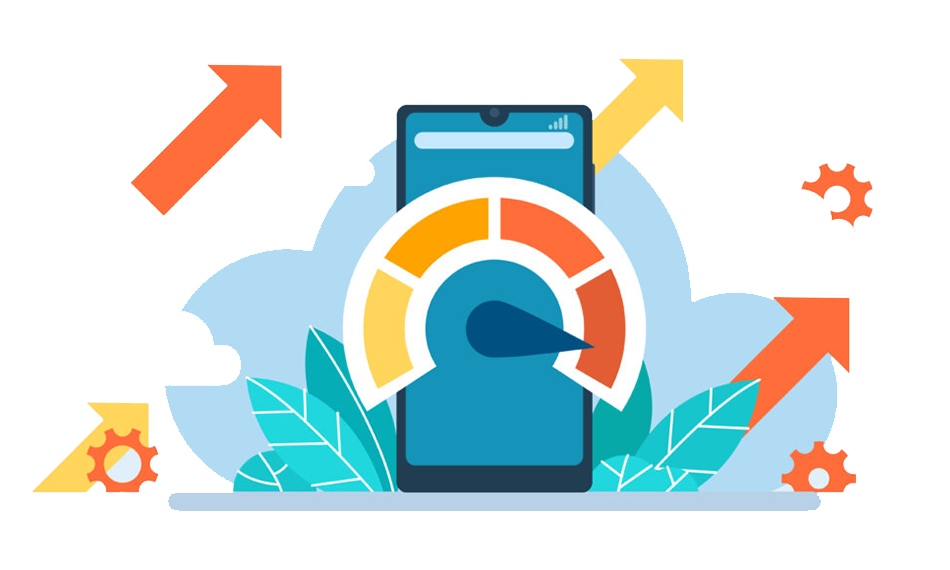Introduction
As we advance into 2024, website speed optimization remains a crucial aspect of ensuring your ecommerce store stays competitive. The digital landscape is evolving rapidly, and a slow website can significantly impact user experience and conversion rates. This guide will delve into essential strategies for optimizing your ecommerce store’s speed, helping you stay ahead of the curve.
Why Website Speed Matters for Ecommerce
The fast-paced digital environment of today has made users expect websites to load rapidly. According to a study by Google, 53% of mobile site visitors leave a page that takes longer than three seconds to load. This statistic underscores the importance of website speed optimization. A fast-loading website not only enhances user experience but also boosts your store’s search engine ranking, increasing visibility and driving more organic traffic.
Understanding Core Web Vitals
Core Web Vitals are a set of metrics defined by Google that are critical for delivering a great user experience on the web. These include:
- Largest Contentful Paint (LCP): Measures loading performance. 2.5 seconds after the page loads is the ideal amount of time for LCP to occur.
- First Input Delay (FID): Measures interactivity. The FID of a page should be less than 100 milliseconds.
- Cumulative Layout Shift (CLS): Measures visual stability. Pages should maintain a CLS of less than 0.1.
By focusing on these metrics, you can ensure your ecommerce site is not only fast but also provides a seamless user experience.
Key Strategies for Ecommerce Store Speed Optimization
Optimize Images for Faster Loading
Images are often the largest files on a webpage, and optimizing them can lead to significant speed improvements. Use picture compression software to reduce file sizes without compromising quality. Convert images to modern formats like WebP, which are more efficient than JPEG or PNG.
Website Speedy offers an excellent feature for enabling lazy loading, ensuring images only load when they are visible on the screen, reducing initial load times, and saving bandwidth.
Leverage Browser Caching for Returning Visitors
Browser caching stores static files on a user’s device, allowing the browser to load them from the local cache rather than downloading them from the server each time. This can significantly shorten the time it takes for new visitors to load.
Set an appropriate cache expiration time for different types of content, such as images, CSS, and JavaScript files, to ensure a faster experience for repeat visitors.
Minimize HTTP Requests to Speed Up Loading
Each element on your webpage, including images, scripts, and stylesheets, requires a separate HTTP request. By minimizing these requests, you can reduce load times. Combine files where possible and eliminate unnecessary elements, such as merging multiple CSS files into one and combining JavaScript files, to reduce the number of requests the browser needs to make.
Improve Website Speed Easily with Website Speedy
Boost Website Speed NowFor Worldwide Reach, Make Use of a Content Delivery Network (CDN)
A CDN distributes your website’s content across multiple servers worldwide, ensuring that users can access data from the server closest to them. This enhances load times and lowers latency. Well-known CDN suppliers include Akamai, Amazon CloudFront, and Cloudflare.
Optimize JavaScript and CSS for Better Performance
Render-blocking JavaScript and CSS can delay page load times. Website Speedy excels in eliminating render-blocking resources, allowing your content to load faster. Minify your JavaScript and CSS files to reduce their size and defer non-critical JavaScript until after the page has loaded, ensuring your webpage becomes interactive as quickly as possible.
Reduce Initial Server Response Time for Faster Loads
The time it takes for your server to respond to a user’s request significantly impacts load time. Website Speedy helps to reduce initial server response time, ensuring a faster load time for your ecommerce store. Optimize your server configuration, use fast web hosting, and reduce the use of third-party plugins and scripts to improve server response times.
Website Speedy: The Ultimate Tool for Website Speed Optimization
When it comes to ecommerce store speed optimization, Website Speedy stands out as a top tool. It offers features such as lazy loading, eliminating render-blocking resources, and reducing initial server response time. These capabilities make it the best tool to fix Core Web Vitals issues and improve the performance of ecommerce platforms like Shopify, Wix, and BigCommerce.
Enabling Lazy Loading
Lazy loading ensures that images and other media are only loaded when they come into the viewport, reducing initial load times and saving bandwidth. By deferring the loading of off-screen content, you can significantly improve the perceived performance of your website, ensuring users see the main content faster.
Eliminating Render Blocking
Render-blocking resources can delay your page’s load time. Website Speedy helps to eliminate render-blocking resources, ensuring that your content loads faster. By deferring or asynchronously loading JavaScript and CSS files, you can improve your site’s loading speed and enhance user experience.
Reducing Initial Server Response Time
A faster server response time improves your page’s overall speed, enhancing user experience and potentially boosting your search engine rankings. Website Speedy provides tools and techniques to reduce initial server response times, ensuring your ecommerce store performs at its best.
Benefits of a Fast Ecommerce Store
Improved User Experience
A fast website provides a smooth and enjoyable experience for users, leading to higher engagement and lower bounce rates. A study by Akamai revealed that a two-second delay in web page load time increases bounce rates by 103%. By optimizing your website’s speed, you can keep users engaged and encourage them to explore more of your site.
Higher Conversion Rates
Speed plays a crucial role in conversions. According to Akamai research, conversion rates might drop by 7% for every 100 milliseconds that a website takes to load. By improving your website’s speed, you can enhance the overall shopping experience, leading to higher conversion rates and increased sales.
Better SEO Performance
Google considers page speed as a ranking factor. A faster website can improve your SEO performance, leading to higher visibility in search results. By focusing on website speed optimization, you can ensure that your ecommerce store ranks higher on search engine results pages (SERPs), driving more organic traffic to your site.

Want to read this blog offline?
No worries, download the PDF version
now and enjoy your reading later…
 Download PDF
Download PDF Increased Customer Retention
A fast website not only attracts new customers but also helps retain existing ones. When users have a positive experience on your site, they are more likely to return for future purchases. A study by Radware found that improving page load times by just one second can increase customer satisfaction by 16%. By optimizing your website’s speed, you can build a loyal customer base and drive repeat business.
Enhanced Mobile Experience
With more users accessing ecommerce sites via mobile devices, a fast-loading mobile experience is crucial. Optimizing your site for mobile speed ensures that users on smartphones and tablets have a seamless browsing experience. Among mobile users, this may result in increased engagement and conversion rates.
Conclusion
Website speed optimization is an essential aspect of managing an ecommerce store in 2024. With the digital landscape continuously evolving, staying ahead of the curve is crucial. By implementing the strategies outlined in this guide and leveraging tools like Website Speedy, you can ensure your ecommerce store delivers a fast, seamless experience for your users, leading to higher engagement, better SEO performance, and increased conversion rates.
FAQs on Website Speed Optimization
Q. What is website speed optimization?
A. Website speed optimization involves a set of techniques aimed at improving the load time of a website. This includes optimizing images, leveraging browser caching, minimizing HTTP requests, and using tools like Website Speedy to enhance performance.
Q. Why is website speed optimization important for ecommerce stores?
A. A fast website enhances user experience, improves conversion rates, and boosts SEO performance. It ensures that users stay longer on your site and are more likely to complete purchases.
Q. How can I measure my website’s speed?
A. You can use tools like Google PageSpeed Insights, GTmetrix, and Website Speedy to measure and analyze your website’s speed. These tools provide insights and recommendations for improvement.
Q. What are Core Web Vitals?
A. Core Web Vitals are a set of metrics defined by Google to measure the quality of user experience on the web. Among them are Cumulative Layout Shift (CLS), First Input Delay (FID), and Largest Contentful Paint (LCP).
Q. How can I improve my Shopify store’s speed?
A. To optimize a Shopify store, focus on compressing images, minimizing HTTP requests, leveraging browser caching, and using tools like Website Speedy to reduce server response time and eliminate render-blocking resources.
Q. What is lazy loading?
A. Lazy loading is a technique that delays the loading of images and other media until they are needed (i.e. when they come into the viewport). This reduces initial load times and saves bandwidth.
Q. How does a CDN help in website speed optimization?
A. A CDN distributes your website’s content across multiple servers worldwide, allowing users to access data from the nearest server. This enhances load times and lowers latency.
Q. What is render-blocking, and how can I eliminate it?
A. Render blocking refers to resources (e.g., JavaScript and CSS) that block the rendering of a webpage. You can eliminate render-blocking by deferring these resources and using tools like Website Speedy to optimize their loading.
Q. How important is server response time?
A. Server response time is crucial for website speed. A faster server response time leads to quicker load times, enhancing user experience and improving SEO performance.
Q. Can website speed optimization improve mobile performance?
A. Yes, optimizing your website’s speed can significantly improve its performance on mobile devices, ensuring a seamless experience for users on all platforms.















































